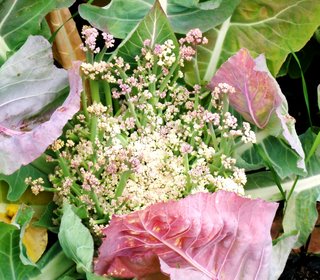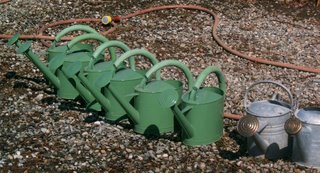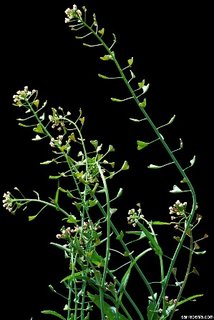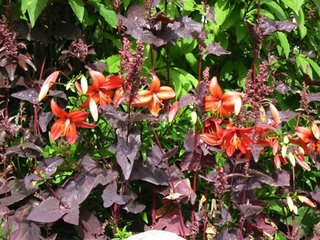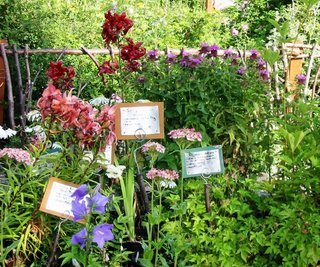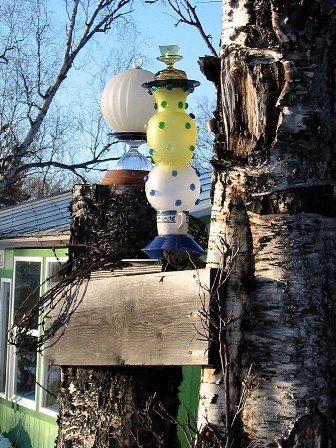A number of years ago, I saw a picture in a magazine of an outdoor table set for lunch. It was completely covered in deep moss from the woods with pots of daffodils nestled into the moss at the center. It looked very organic and I imagined it smelled of that wonderful earthy-musk that wafts up when you mess about in the woods on a damp day. It was beautiful; all green and soft. The place settings were also nestled in making it look like it was set for a feast for woods fairies.
But it’s winter here and pretty cold at the moment. I’m afraid a mossy table will not be our lot for this holiday season. Do not despair! Along with poinsettias, garlands and Christmas cactus, much can be done to bring the beauty of growing things to our holiday festivities.
Artichokes or pomegranates, for example,
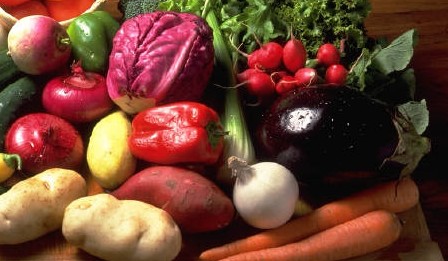 make fabulous candle holders! Both of these are rich in texture and color. Use an apple corer to make a hole in the top about 1 ¼ inches deep. The Pomegranates can be placed directly on the table but you’ll have to cut off the bottom of the artichokes to make them sit flat, so they will have to rest on little plates to protect the cloth or table.
make fabulous candle holders! Both of these are rich in texture and color. Use an apple corer to make a hole in the top about 1 ¼ inches deep. The Pomegranates can be placed directly on the table but you’ll have to cut off the bottom of the artichokes to make them sit flat, so they will have to rest on little plates to protect the cloth or table.A four inch container of wheat grass can also be magical. Remove the planted grass from its plastic growing pot (it will be all root), shove it into a four inch terra/cotta pot and place a candle in the middle. Simple beauty at it’s best! Try serving kabobs or other squired hors d’oeuvres poked into these pots of grass; it’s a lovely presentation. If you’re inclined, you can even grow your own for almost nothing. Plant wheat seed very thickly in a pot about one month before an event. Keep in the window or under a grow light. It’s best to use at about 3 inches high.
Napkins l
 ook elegant tied up in a bit of raffia or satin ribbon, with a tiny birch or spruce sprig tucked under the tie. Holly sprigs, rosemary and other herbs work as well, as do any number of small peppers. But don't use anything poisonous! All-in-all, a nasty thing to put on the table! If you use place setting cards or menu cards, a couple of holes punched along the side or top of the card will allow a birch or herb sprig to be slipped through. Any of these simple touches will warm your holiday feasts and help satisfy the urge to be surrounded by growing things on these frigid days. Even a basket of fresh fruits or veggies can do wonders for a table in mid-winter!
ook elegant tied up in a bit of raffia or satin ribbon, with a tiny birch or spruce sprig tucked under the tie. Holly sprigs, rosemary and other herbs work as well, as do any number of small peppers. But don't use anything poisonous! All-in-all, a nasty thing to put on the table! If you use place setting cards or menu cards, a couple of holes punched along the side or top of the card will allow a birch or herb sprig to be slipped through. Any of these simple touches will warm your holiday feasts and help satisfy the urge to be surrounded by growing things on these frigid days. Even a basket of fresh fruits or veggies can do wonders for a table in mid-winter!Another great tactic for a festive table is making brightly colored foods. A few suggestions would be things in greens, reds and oranges such as fresh cranberry sauces and chutneys, biscuits and bread made out of sweet potatoes, yams, or carrots; and avocado bisques. Sweet potatoes, yams, and beets also make yummy mashed dishes, just like potatoes, and are so pretty to look at. Yes, mashed beats! They are so good you’ll wonder why you never ate them before.
Pumpkin or carrot soups and borsch are also a feast for the eyes as well as the tummy. They are perfectly suited for first course fare at even the most elegant meal. Once again the humble vegetable rises to a place of honor!
Pears poached in mulling spices and dark red wines, or peaches poached in a clear vanilla syrup make excellent, colorful endings. Likewise, apple currant tarts or candied lime, lemon and orange peels are most satisfying with coffee or tea at the end of a grand banquet.




